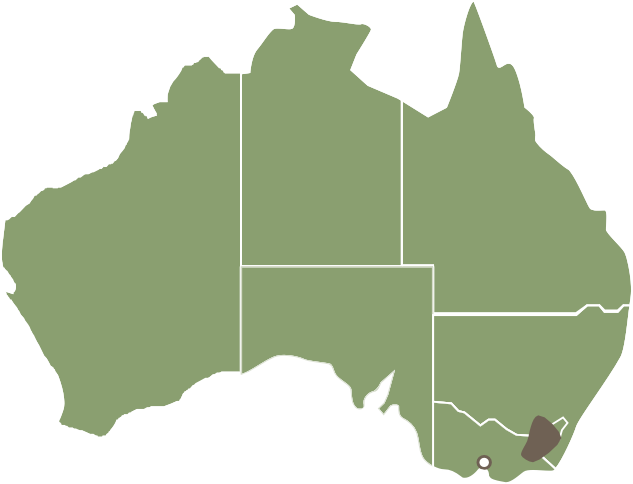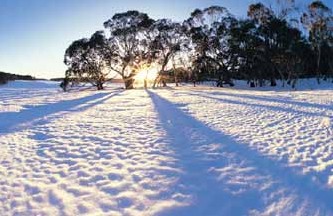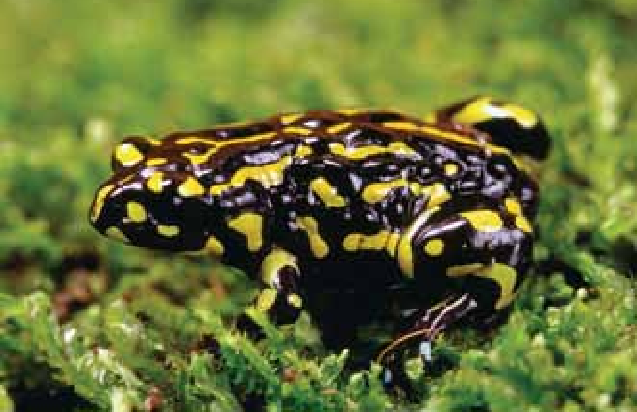The Australian Alps
澳大利亚阿尔卑斯山脉

The Australian Alps — where endless mountain ranges give way to uninterrupted horizons and ever-changing weather reveals a world of winter snow and summer wildflowers. This ancient landscape has a long human history steeped In tradition and adventurous tales of fame and fortune. For Indigenous Australians It Is a place of great spiritual significance. The Australian Alps contain 11 national parks and reserves, the highest mountain peaks on the continent and in winter, the most extensive snow-covered areas in the country.
THE CREATION OF A WORLD-CLASS ALPINE ENVIRONMENT
Over 600 million years of geology has shaped Australia's unique alpine environment. The mountain ranges are some of the oldest in the world, with some minerals in the rocks found to be over three billion years old.
The age of the mountains and diversity of the rocks has meant that unlike other alpine areas in the world, the Australian Alps has fertile soil, up to one metre deep In places. This soil is capable of supporting a diverse range of distinctive plants, animals and ecosystems. Water loving ferns, sphagnum bog and fen (mineral-rich wetland) communitiescan be found In moisture-pockets. Woodlandsand arid grasslandsexist In the dry shadows of mountains and cliffs, and the striking silver and red snow gums stand out amongst a snow-filled landscape. Alpinemeadows explode in spring and summer once the snow- melt begins — masses of yellow billy buttons, pink trigger plants and silver and white snow daisies.
AUSTRALIA'S ALPINE PLANTS - THERE’S NOTHING ELSE LIKE THEM
The diverse habitats of the Australian Alps have given rise to high levels of endemic species — species that don’t live anywhere else on earth. About 25 per cent of Australia's alpine plant species are endemic — five times higher than other similar regions of the world. Over 46 different species of eucalyptus treesexist in the Alps, living In all climates from cool, lush forests through to the harsh subalplne terrain. No of her tree In the world shows such rugged versatility.
FROGS IN DANGER
Baw Bawfrog
The Baw Baw frog is found only in an 80 square kilometre range on the Baw Baw plateau, Victoria. Unlike the you ng of otherfrog species, Baw Bawtadpoles do not swim orfeed! Instead, they hatch with a yolk sac that sustains them until they turn into frogs and live hidden under vegetation and leaf litter. Oncethought to number between 20-30,000, fewer than 600 frogs remain. The reasons for the decline of the Baw Baw frog are unknown, but could include climate change, pollution, habitat destruction or disease.
Southern corroboreefrog
The striking black and yellow southern corroboree frog grows to 30 millimetres in length and is found only in a very small part of the su ba I pine area of Kosciuszko National Park. It is thought that there are fewer than 100 frogs, including just 16 breeding males remaining in the wild. Similartothe Baw Bawfrog,the exact reason fortheir declining numbers is unknown.
CULTURAL HERITAGE
The Alps have a long record of human history. Humans have lived here for at least 21,000 years, even through the ice age. Many Indigenous clans adopted the Alps as an annual meeting place because ofthe seasonal abundance of bogong moths — a major food source. They were also a place of important ceremonies, cultural and political discussions, and a trade link between tribal groups acrossthe region. The Australian Alps are also steeped in European history. Pioneers flocked hereto make their fortune — cattle grazing in the 1830s, the gold rush era ofthe 1850s and logging in the 1860s. Their legends live on through stories and song. The cattlemen’s huts that dot the high plains are a legacy of those days.
澳大利亚阿尔卑斯山脉
在澳大利亚的阿尔卑斯山脉,峰峦叠嶂的山脉绵延无尽,有着一望无垠的广阔视野;伴随当地变幻万千的天气,游客们可以领略到冬季的雪山皑皑,夏日的野花绚烂。各种冒险传说和名利故事在此发生,使得这处古老的景点多年来一直同人类的探索之旅紧密相连。 对于澳大利亚土著人来说,这处景点还彰显了独特的精神意义。 澳大利亚阿尔卑斯山脉拥有11个国家公园和自然保护区,澳洲大陆海拔最高的山峰矗立于此,冬季最广阔的白雪覆盖区也在于此。
世界顶级高峰——澳大利亚阿尔卑斯山脉的形成
澳大利亚独特高山环境的形成得益于6亿多年的地质变化。 这些山脉是世界上最古老的山脉之一,岩石中一些矿物质距今已存在超过30亿年。 山脉的年代和岩石的多样性,使得澳大利亚阿尔卑斯山脉与世界上其他高山地区有所不同,深达1米的肥沃的土壤覆盖于此,这种土壤为各种独特动植物的生存和生态系统的维持提供了养分。 潮湿的“口袋形”洼地中,喜水蕨类、泥炭沼泽和沼泽(富矿物质湿地)群落安然于此。山脉和悬崖的干燥阴影下,广袤的森林和干燥的草地随处可见;银装素裹的风景中,银色和红色的桉树显得格外醒目。春夏两季,每当雪开始融化,阿尔卑斯山上的草地就会焕发出勃勃生机-:成片的黄色金槌花,粉色花柱草和银白色的雪雏菊竞相开放。
澳大利亚阿尔卑斯山上的植物群——世上绝无仅有
澳大利亚阿尔卑斯山上的多样化栖息地孕育了丰富的特有物种, 此处大约25%物种都属于地方性物种——这个比例高出世界上其他类似地区5倍。 阿尔卑斯山脉中光桉树的种类就多达46种,或是凉爽茂密的森林中,或是恶劣的亚高山地形中,各种气候环境下都可以看到它们的身影,世界上还没有其他树种能有这么坚强的韧性。
濒危蛙种
巴乌巴乌蛙
在维多利亚州巴乌巴乌高原80平方公里的范围内,是巴乌巴乌蛙的唯一栖居地。与其他品种的幼蛙不同,巴乌巴乌蛙的蝌蚪不游泳,也不进食!它们会在维持他们生命所需的卵黄囊中孵化,直到长成青蛙后破囊而出,之后就生活在植被和落叶层下。 巴乌巴乌蛙的数量曾一度被认为在20,000-30,000只之间,而现在则不到600只。数量减少的原因尚不明晰,有可能是气候变化、污染、栖息地破坏或疾病等。
南部圆纹蛙
黑黄相间的南部圆纹蛙长相醒目,身长30毫米,只可在哥斯高国家公园亚阿尔卑斯地区的一小部分区域看到。 据估计,目前仅有不到100只南部圆纹蛙,其中野外仅有16只雄蛙育种。与巴乌巴乌蛙情况相似,它们数量减少的确切原因尚不清楚。
文化遗产
阿尔卑斯山脉同人类历史有着源远流长的关联。人类已经在这里生活了至少21,000年,甚至跨越了冰河时代。许多土著部落都曾将此处作为每年的聚集地。因为这里的博贡蛾到一定季节会大量繁衍,而博贡蛾是土著部落主要的食物来源。这里也是举行重要仪式,进行文化和政治交流的场所,同时也是该地区部落群体之间加强贸易联系的所在地。 澳大利亚阿尔卑斯山也同欧洲历史密不可分。开拓先驱们来到此地,追求发财之梦。19世纪30年代,人们来这里放牧;19世纪50年代,人们来这里淘金;19世纪60年代,人们来这里伐木。 他们的传说随着各种故事和歌谣广为流传,而高地平原上的牧民小屋就是那段历史的写照。



